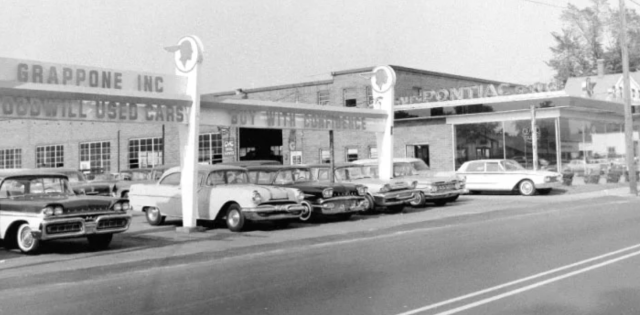When it comes to his career and his life outside of the service bay, Greg Stropko is firmly in the driver’s seat. And sometimes, that driver’s seat is on a boat on the Chesapeake Bay.
“I pretty much spend a lot of time at my family’s house on the water,” Stropko says in this NADA video. “I like coming out on the boat with my father. He’s had a house down here in Montross (Virginia) for 20 years. There’s not a lot of people, not a lot of traffic. I live in the city, so it’s nice to come out here and get a break.”
Montross is a small community about 83 miles—and a whole world away—from Stropko’s work as an automotive service technician at Joyce Koons Buick GMC in Manassas, Virginia. For more than 60 years, Joyce Koons Buick GMC has been part of the Northern Virginia community, and is the highest-ranked Buick, GMC dealer in the area with a 96% recommended rating on DealerRater (plus a 4.8-star rating).
Stropko began working at Joyce Koons while he was still in college. He is a graduate of The General Motors Automotive Service Educational Program (GMASEP), a collaboration between GM, local GM-affiliated dealerships, and the Northern Virginia Community College.
When it was started in 1979, GM’s ASEP program was an industry first, graduating 13 students from Delta College in Michigan. Today, it is offered at more than 50 colleges and universities nationwide and has produced over 15,000 automotive service technicians.
GM ASEP is a structured two-year program that provides students with classroom instruction, hands-on training, and paid work experience while they earn their associates degree. Many students, like Stropko, become service technicians when they graduate. “I became an apprentice and I worked under a guy for two years, went on my own around 21,” he said. “I’ve been with GM the whole time.”
At Joyce Koons Buick GMC, being part of a team continues even after college, Stropko said. “There’s a lot of guys here that have seniority, and they help younger college students but they also help guys like me in their 30s and 40s. It’s kind of a team effort. We all help each other.”
There are approximately 130 full-time students enrolled each year at the Northern Virginia (NOVA) Community College GM ASEP program and most of them are hired immediately, says Keith Brown, head of the NOVA program. “There are multiple shops across our region looking for the brightest minds that will lead them into the future. Employers are often ready to hire before classes begin,” Brown said. “Some of my students have graduated and become techs and are making six figure incomes. They’re in the right shop with the right attitude, plus you do have to have the skills. I have more employers reaching out than I have students to give them.”
That’s certainly been Stropko’s experience. “The demand for quality technicians is definitely out there. If you’re a good technician, I think that you’re going to go far, and you’re pretty much going to be able to get a job anywhere.”
Tearing Down Stereotypes
Brown and Stropko say one of the biggest misconceptions about being a service technician are outdated stereotypes about what the job entails. “There’s still that stigma attached to it. Some people still view the person who maintains and repairs this advanced technology as, you know, ‘the grease monkey,’” Brown said. “The profession does not command the level of respect that it should. The people repairing your cars are definitely more than just a ‘grease monkey’ or a guy that swings a big hammer around. We work every bit as much with computers and technology as we do with our hands.”
Today’s cars are high-tech, advanced systems that require mechanical and technical knowledge, said Stropko. “The days I think of being a grease monkey are long gone. They’ve been gone for many, many years. It’s a very technical field. Every year these vehicles are changing. We’ve got forward looking cameras, we’ve got adaptive cruise control and all those things, at some point, require service. And with today’s technology, the demand for technical know-how is getting greater and greater.”
It’s also more of a “people job” than people may realize, Stropko notes. Today’s service technicians need people skills, not just in order to work with other team members but to help customers as well. “Customer satisfaction nowadays is of the utmost importance. When we actually complete the vehicle and we deliver it to the customer and they’re satisfied, it’s a great feeling,” he said. “I like knowing I provide a service that people really and truly need.”
Even when he’s far from the service bay and out boating on the Chesapeake Bay, Stropko’s work in influences his hobbies, and his pride in his workmanship is plainly visible. An avid fisherman, Stropko makes his own fishing lures from materials left over from servicing vehicles that he then sells to local retailers. “I use recycled lead from used wheel weights,” Stropko explained as he walks through the process. “I melt the lead down, pour the lead in the mold, paint the head, make my own eyes. From start to finish, I make all of it.”










